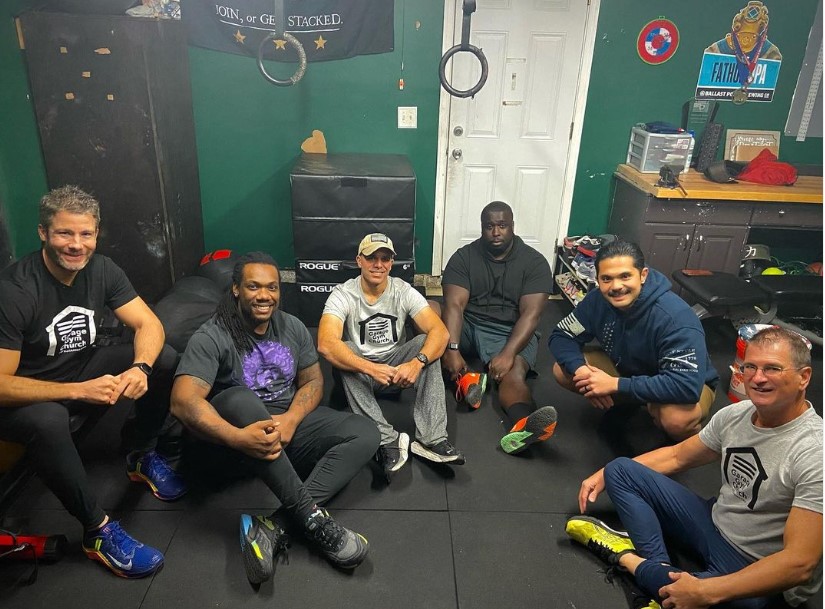Recognizing that change is an inevitable part of our life was part of our last message. Sometimes changes are sudden, and beyond our control. Other times in life we are the ones who need to be proactive in making a change for the better. In order for us to receive God’s best for our lives, and be as positive and productive as possible, we need to be honest with ourselves about some of our behaviors that hinder our time, health, productivity, and personal relationships with others. If you were to evaluate your life right now, what are some changes you could make that would improve your life? Take a few minutes and jot them down. Some of us may have several areas of our lives we feel we need to change. However, I’m sure we can all come up with one behavior that would greatly improve an area of our life if we could commit to making that one change. Healthier eating habits, exercising on a regular basis, or improving a negative relationship with a co-worker can all have a profound impact in how we feel about ourselves and view the world. Once you consider making a change for the better, what are the steps involved to move forward?
The Transtheoretical Model of Change
The Transtheoretical Model of Change, also known as TTM, is a model of intentional change where the decision making of the individual is the impetus for the positive change in behavior. TTM was pioneered in the early 1980s by psychologist James O. Prochaska, PhD, and researcher Dr. Carlo C. DiClemente, who used this model to help treat addiction problems, such as overeating, smoking and alcoholism. Understanding that change is a process, TTM consists of six stages of change:
1) Precontemplation
2) Contemplation
3) Preparation
4) Action
5) Maintenance
6) Termination
Stage 1 – Precontemplation
Individuals in the precontemplation stage of change have no intention of taking any action in the foreseeable future. They often don’t view their behavior as a problem in this stage. According to Prochaska, people underestimate the benefits of changing and overestimate the costs or cons in the precontemplation stage. People in this stage have usually been talked to about their behavior by family, friends, or health care workers. For example, maybe your spouse and doctor have both suggested that you lose weight to improve your high blood pressure levels. Dr. DiClemente cites four specific reasons (the Four R’s) that many people are in the precontemplation stage: reluctance, rebellion, resignation and rationalization.
Stage 2 – Contemplation
People in the contemplation stage are now thinking about taking action, but are still on the fence and uncertain as to moving forward with the change. They are open to new information and feedback at this stage, and are considering the pros and cons of their current behavior, as well as the risks and rewards of initiating a change.
Stage 3 – Preparation
People in the preparation stage are now committed to making a change, and have a plan of action, such as enlisting the services of a certified personal trainer to aid in their weight loss plan. It is recommended that people in this stage set a specific target date to begin their new change. I always like to use the SMAC formula here, as goal setting can be vital to charting your success. SMAC stands for specific, measurable, achievable and committed. Set a specific goal, such as I will drop 20 pounds in the next 2 ½ months. This goal is also measurable because you are quantifying it with a number that can be calculated over time. The goal needs to be achievable, in the sense that it’s a realistic target to complete within the assigned time, with a consistent effort on your part. Last but not least, you commit your goals to writing on paper. I cannot overemphasize the importance of writing down your goals. The majority of successful people I have met or read about in life constantly write down their goals. Think about your goals, pray and meditate on them, envision yourself being successful and accomplishing every one. As Joyce Meyer likes to often say, “Where the mind goes, the man will follow.” This is true of both unhealthy behavior patterns and positive behavior modifications.
Stage 4 – Action
This may be the most difficult, but most rewarding stage. You are now at the point where you are actively engaged in implementing your action plan. For example, if you’ve been told you have a drinking problem and you’re now in the action stage, you’ve started to attend AA meetings. If you’ve made a vow to save your marriage, you’re now meeting with a marriage counselor or church pastor. This is a break through stage because now you have sought out counsel and services by professionals who have the expertise and education to help you attain your goal and follow through with a healthy behavior change. Be sure to count all the small successes along the way. Your ultimate goal of change is like climbing a ladder, with each rung on the ladder representing one smaller goal of accomplishment, which brings you a little closer to your primary goal each day. As former President Theodore Roosevelt once said “Believe you can and you’re halfway there.”
Stage 5 – Maintenance
The maintenance stage represents three to six months of continuous new behavior patterns within the action stage. In this stage your new behaviors have now become normal and routine, with the threat lessening that you return to your older behavior patterns. Congratulations are in order, as you are well on your way to making a permanent, life-lasting change. Don’t look back; forge ahead and continue your quest with a quiet humility and confidence. Sustain your efforts through God’s help with daily prayer and meditation. Maximize your efforts in making your change a permanent part of your life. Make some important changes to keep your old behavior away for good. You may need to frequent different establishments, or sever some long-term relationships. For example, if you quit drinking, but still have some friends who want to invite you out to a bar for a drink, then you should probably find some new friends who will help encourage you to stay the course of sobriety.
Stage 6 – Termination
According to Prochaska, only about 15-20 percent of people successfully reach the termination stage. People who reach the termination stage have successfully transitioned to their new behavior change, and the temptation to revert back to their older behavior pattern is completely gone. A couple examples of people successfully reaching the termination stage include the person who lost 60 pounds, and has been able to maintain this weight loss for several years. Another one is a former 2 pack a day smoker who is now going on their fourth year without having a cigarette. The key for long term success upon entering the termination stage is to continue to educate yourself on the behavior, and stay active in helping others with similar challenges that you once faced. No one knows more about the challenge of giving up smoking and the power of nicotine addiction than a former smoker. People who have been able to beat the same temptations are often the best sources of inspiration and encouragement for others who are desperately trying to make the same behavior changes in their own life. We’re all blessed to be a blessing. Now that you’ve reached your goal, help someone else reach their own goal!
Peace, balance, health and happiness,
Rob












